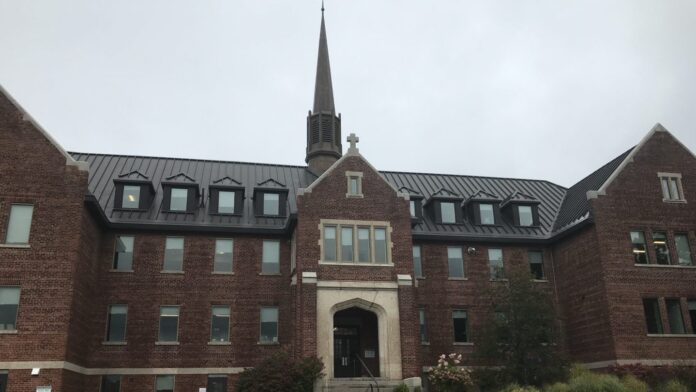The following posting is the 4,001st on the 21st Century Tech Blog. Since its start 14 years ago this month, I have written on science and technology subjects with occasional forays into history and geography. I have been joined by many guest writers who have added to the searchable content you find here.
Since I was a young boy, I have been drawn to science and history. These have been two of my passions. As a young teen, I was drawn to the science fiction novels and short stories of authors like H. G. Wells, Ray Bradbury, Aldous Huxley, George Orwell, Isaac Asimov, Arthur C. Clarke, John Wyndham and others. Their writing was about alternate histories, dystopian worlds and the future.
After graduating with a history degree and a goal to teach high school, I could not fulfill that dream. Instead, I found a job in educational publishing calling on post-secondary schools, selling textbooks, and looking for future authors.
A book I was offering to schools was co-authored by Don Fabun and Niels Sundermeyer, called “The Dynamics of Change.” Published in 1968 it described what to watch for within the next twenty years and what our world would be like by the late 1980s.
Another book I had to offer was Douglas Hofstadter’s, “Gödel, Escher, Bach,” which described mathematics, the emergence of human consciousness from biological constructs and how computers in the future would attain similar intelligence and self-awareness.
After reading books like the aforementioned two and science fiction I became hooked on the future. More than a half-century later, I continue to seek what lies ahead, researching the changing world, humanity, and our place in the Universe.
I want to thank the tens of thousands of steadfast readers from more than 40 countries who visit this blog site and inspire me to continue its pursuit at age 75. I hope to write and host postings here as long as my wits remain.
It was Isaac Asimov who aspired to write until the day he died. I would wish for the same. So please continue to visit and use the Search window to look at subjects that interest you already written about.
You may find today’s post a bit of a departure from what is typically published here. It is more about history and less about science and technology. I hope you find the subject as interesting as I have found it all because a morning read of the newspaper brought back a memory of the past.
On September 30, 2024, Canada’s federal government acknowledged the National Day of Truth and Reconciliation, a solemn day that acknowledges the injustices done to First Nations from the country’s colonial past to the present.
The picture that accompanies this posting is of a place called Shingwauk Hall. It is located in Sault Ste. Marie, Ontario, where the three largest Great Lakes converge. Shingwauk is home to Algoma University, a school I regularly visited when I was selling textbooks for a living.
Shingwauk Hall is also the site of what was once a residential school. For American readers, Canada’s residential schools were equivalent to U.S. Indian Boarding Schools. These were institutions established by federal and provincial governments, run by Christian religious organizations, and designed to “take the Indian out of the Indian.”
Canada closed its last residential school in 1996. There are still hundreds of Indian Boarding Schools in operation in the United States. These institutions were born to assimilate Native North Americans without ever providing equal footing with the “civilized” European world that encroached upon them beginning in the 15th century with Christopher Columbus’s “discovery” of a land that never needed to be discovered.
The subsequent arrival of Europeans in the Americas wiped out 90% of the Indigenous population within the century that followed the year 1492. The survivors lost their homelands through disease, war and broken treaties. Their children were forced into “schools,” sometimes even kidnapped by legal authorities. These schools whether residential in Canada or Indian in the U.S. were overcrowded, underfunded, disease-ridden and many were run by racist abusers. Children died by the thousands. Many were buried in unmarked graves.
One of those mass unmarked grave sites was discovered by an anthropologist in 2021 at a former residential school in Kamloops, British Columbia. The graves contained 215 children buried by the Catholic Church which operated the school from 1890 to 1969.
On my job when I first visited Shingwauk Hall, my historical curiosity led me to ask about the building’s name. I was told it was an Indigenous one because the building had been donated to the University by the Hurons, a First Nations tribe who had a past chief named Shingwaukonse. This wasn’t exactly true.
Shingwauk Hall is located in the traditional homeland of the Anishinaabe and Métis. The Hall is a replacement building for a former residential school called the Shingwaulk Industrial Home. Chief Shingwuakonse hoped the industrial home would build a bridge between his people and European settlers through the sharing of culture and job skills training for the modern world for First Nations. The institution opened in 1873. The Industrial Home operated until 1970. On its grounds are 109 known burials that include 72 students who died between 1875 and 1956.
Today, Shingwauk Hall is the home of the Shingwauk Kinoomaage Gamig and Algoma University. The former is a post-secondary institution that offers undergraduate degrees in the Anishinaabemowin language and Anishinaabe studies. The latter is a traditional arts and science undergraduate university.
What made me think about Shingwauk Hall on September 30th? It was seeing it in a picture and reading about it in The Globe and Mail newspaper. It also got me thinking about the way forward in reconciling our North American colonial past with the continent’s First Nations. What is the way forward in the 21st century?
The word reconciliation is used to mean reversing historical injustices like the residential and Indian boarding schools. It means ending the colonial constructs of Canada’s Indian Act and that of the U.S. Department of the Interior over Indigenous communities. It means creating economic opportunities, capacity-building, and nation-to-nation relationships between First Nations and Canada’s other government entities.
It means First Nations get better schools, high-speed Internet access, preservation of their languages and cultures, job training, trade opportunities for Indigenous enterprises, clean drinking water in their communities, improved healthcare services, enhanced food security, and more.
Whether First Nations lie north or south of the 49th parallel in North America, the problems are largely the same and the solution is as well, a level playing field for all, not to erase the past, but to provide a sustainable future for Indigenous people. The Shingwauk Kinoomaage Gamig program could be emulated across the Americas to bring a degree of closure to colonialism and give new meaning to the federalist projects in both Canada and the United States this century.









